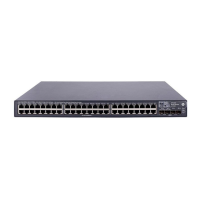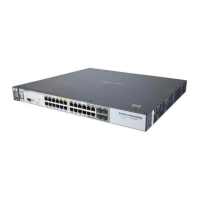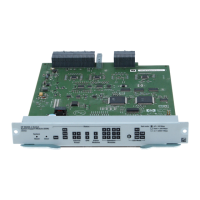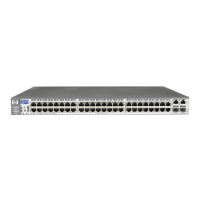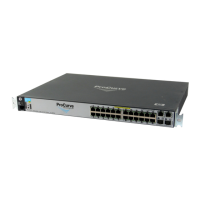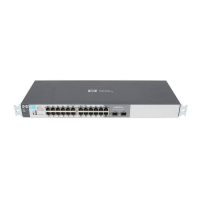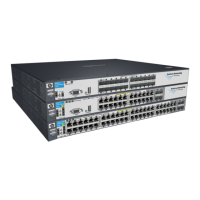Traffic/Security Filters
Configuring Traffic/Security Filters
Figure 9-8. Configuring Various Traffic/Security Filters
Filter Indexing
The switch automatically assigns each new filter to the lowest-available index
(IDX) number. The index numbers are included in the show filter command
described in the next section and are used with the show filter < index >
command to display detailed information about a specific filter.
If there are no filters currently configured, and you create three filters in
succession, they will have index numbers 1 - 3. However, if you then delete
the filter using index number “2” and then configure two new filters, the first
new filter will receive the index number “2” and the second new filter will
receive the index number "4". This is because the index number “2” was made
vacant by the earlier deletion, and was therefore the lowest index number
available for the next new filter.
Displaying Traffic/Security Filters
This command displays a listing of all filters by index number and also enables
you to use the index number to display the details of individual filters.
Syntax: show filter
Lists the filters configured in the switch, with
corresponding filter index (IDX) numbers.
IDX: An automatically assigned index number used to
identify the filter for a detailed information listing. A
filter retains its assigned IDX number for as long as the
filter exists in the switch. The switch assigns the lowest
available IDX number to a new filter. This can result in
a newer filter having a lower IDX number than an older
filter if a previous filter deletion created a gap in the filter
listing.
Filter Type: Indicates the type of filter assigned to the IDX
number (source-port, multicast, or protocol).
Value: Indicates the port number or port-trunk name of the
source port or trunk assigned to the filter
[ index ]
9-21

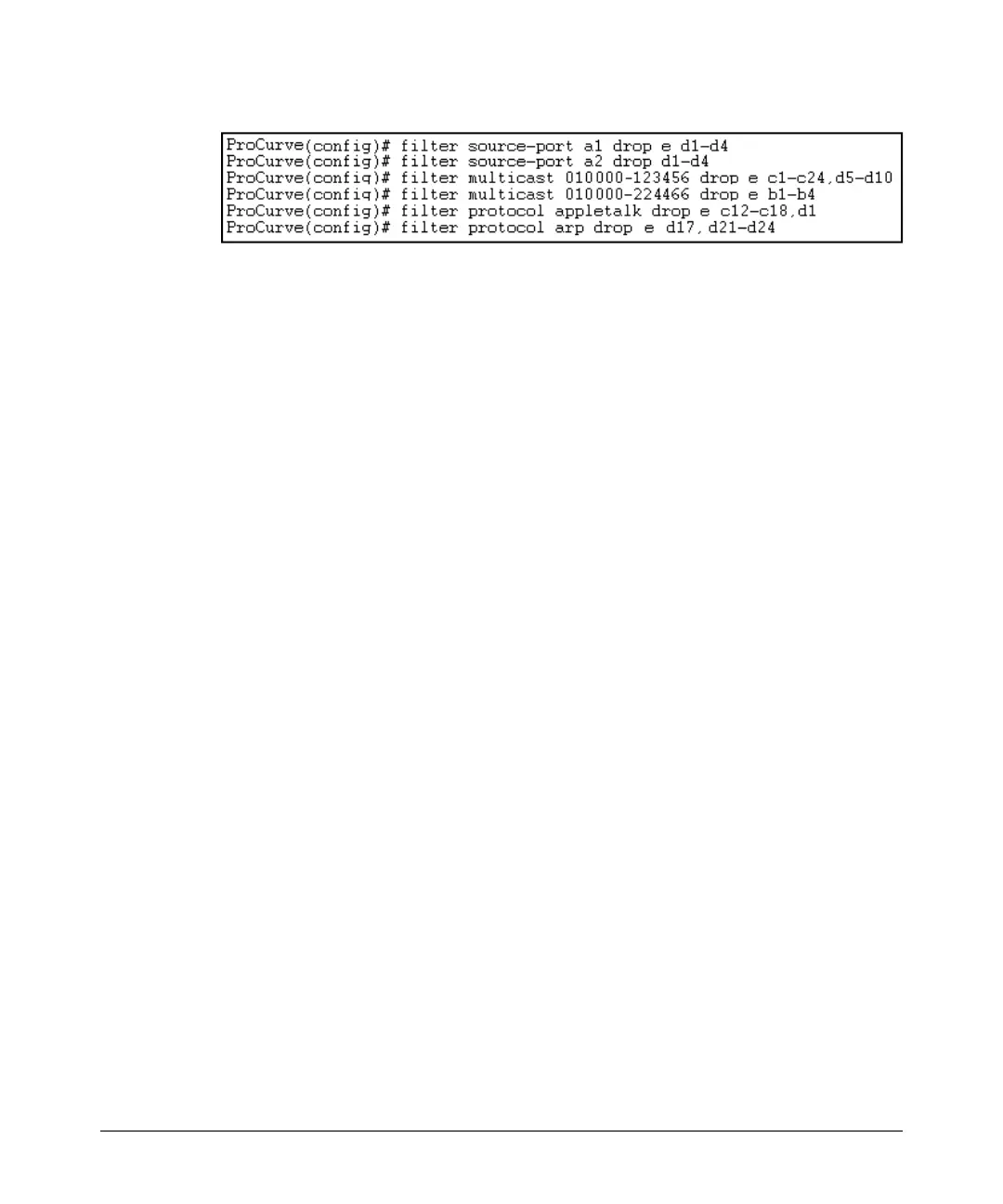